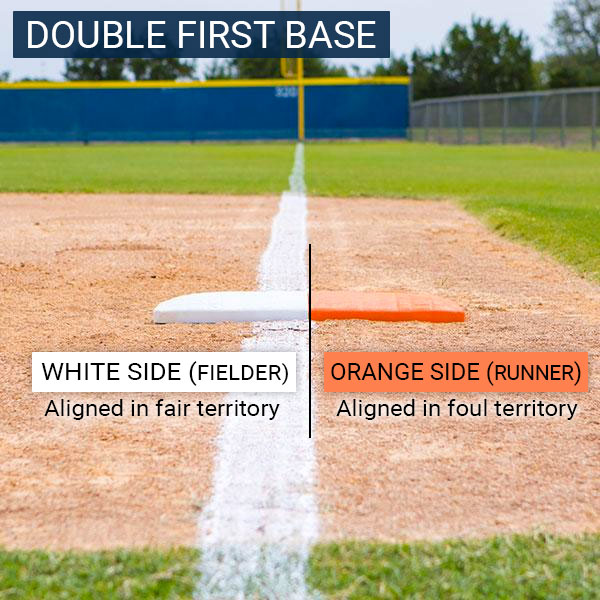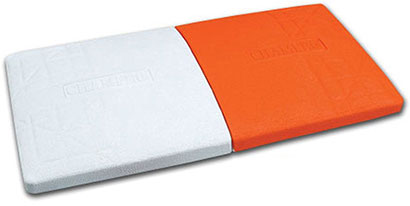
Double First Base Information Guide
As player safety becomes a higher priority in sports, the use of the double first base — also called the safety base — has been approved for use in youth, adult, high school, and college baseball and softball leagues to help reduce injuries. A double first base is specifically designed to reduce collisions by giving the fielder and the runner separate areas to touch. The fielder uses the white portion of the base, positioned on the first base foul line in fair territory, while the runner uses the orange portion, positioned in foul territory.
The movement to make the double first base mandatory is gaining momentum, from youth leagues all the way up to the college level. Below, we outline the current rules regarding double first base use across various baseball and softball leagues and associations.
Current Double First Base League/Association Rules
- Youth Leagues & Adult Associations: Most youth baseball and softball leagues, as well as adult softball associations, do not require a double first base; its use is typically left up to each league or association. Currently, USA Softball is the only major association that mandates a double first base at all levels of play.
- High School (NFHS): The National Federation of State High School Associations (NFHS) has passed a rule requiring a double first base in all high school baseball games, starting with the 2027 season. In NFHS softball, a double first base is allowed but is not required. Each state association determines whether to permit its use.
- College (NCAA): In baseball, a double first base is not mandatory; however, beginning with the 2025 season, the NCAA approved its use in regular-season and postseason games across all divisions. An exception was mandated for the 2025 Division I baseball postseason, where the NCAA required the use of a double first base during Regionals, Super Regionals, and the College World Series. The NCAA does not currently require the use of a double first base in softball. However, at its June 2025 meeting, the NCAA Softball Rules Committee proposed making it mandatory starting in the 2025–26 academic year for Divisions I and II. If approved, Division III would adopt the rule in the 2026–27 academic year. The NCAA Playing Rules Oversight Panel is scheduled to review the proposal on August 13, 2025, which could make the use of a double first base mandatory in NCAA softball.
- Olympic Softball: A double first base has been mandatory in Olympic softball since the sport debuted in the 1996 Olympic Games.











